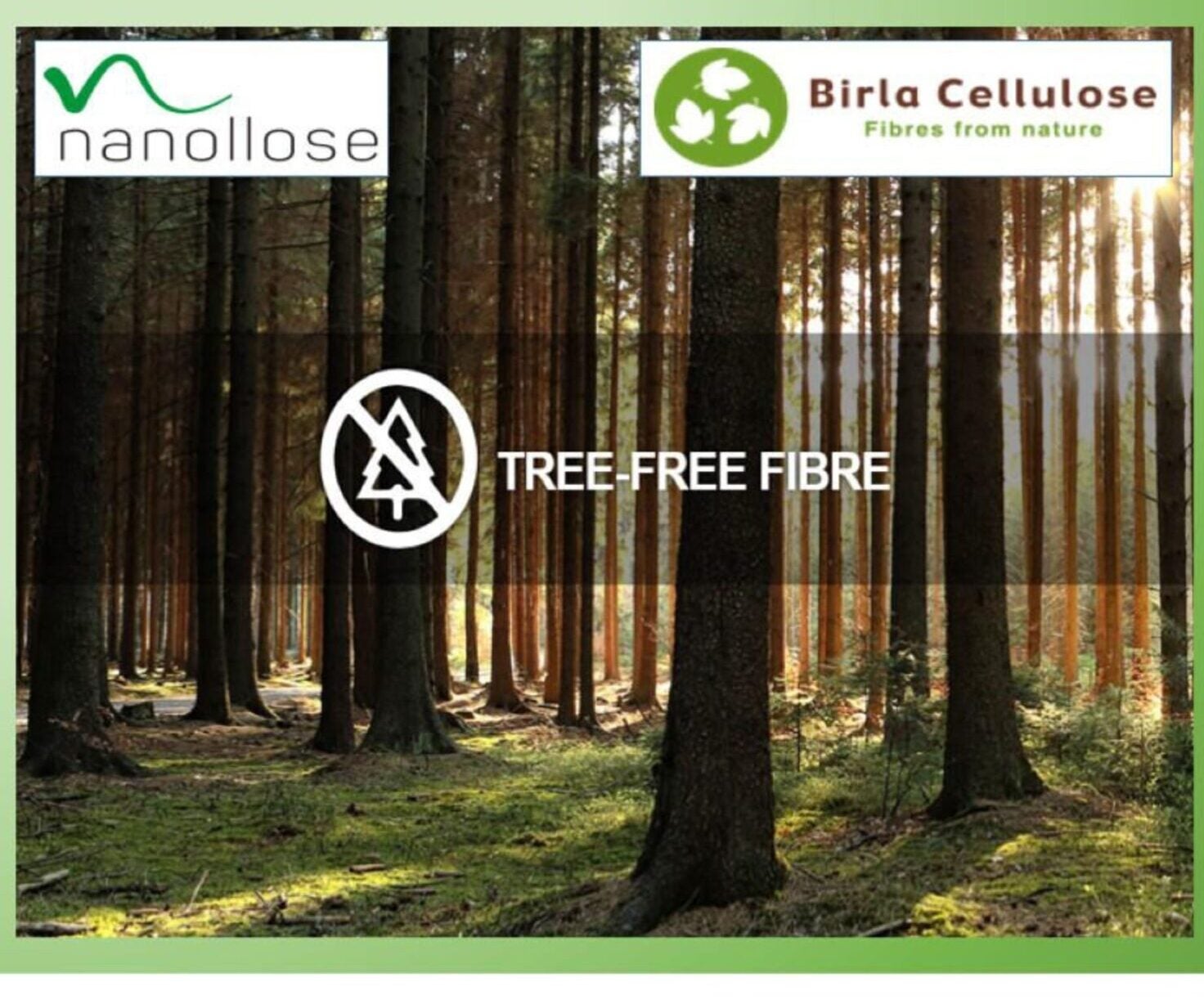
Nanollose has extended its collaboration agreement with Birla Cellulose – a business unit of Grasim – for an additional two years.
The renewal marks a validation of the commercial potential from work carried out to-date, with mutual agreement from both parties that an extension to the research programme is warranted given the results already achieved.
Since the collaboration began in January 2020, Nanollose and Birla Cellulose have worked together closely to develop a high-tenacity lyocell fibre from microbial cellulose, a Tree-Free form of cellulose made by a natural fermentation process on a range of wastes and by-products from the food and agricultural industries.
Following a number of early research breakthroughs, the two companies developed a lyocell fibre that was significantly stronger than conventional lyocell made from wood pulp, and which could also be spun into a fibre finer than silk. Moreover, even when blended with wood pulp, the microbial cellulose conferred increased strength to the resulting fibre. This provides an important technical advantage to Nullarbor, over and above its environmental benefits.
In January 2021, the partners filed a joint patent application for the invention in India, which was followed by an international patent application via the PCT (Patent Cooperation Treaty) in January 2022.
Nanollose and Birla Cellulose then undertook the first pilot production of fibre containing microbial cellulose. The pilot batch produced 260kg of Nullarbor-20 – a blend of 20% microbial cellulose with 80% wood pulp.
The initial 260kg of fibre was converted into a variety of yarns and fabrics, which enabled samples to be sent to several fashion brands for appraisal. The inaugural production run also demonstrated the ability of the technology to produce high quality materials using Nullarbor fibre with existing industry equipment – an important barometer for future commercial applications.
Feedback from textile and fashion professionals who received samples to-date has been very positive, and comprehensive product testing has confirmed the high quality of the fabrics.
Birla Cellulose and Nanollose also made a small batch of Nullarbor fibre from 100% microbial cellulose and converted it to yarn, which was then used to create a 3D-knitted garment designed by Lee Mathews that was launched at the Global Fashion Summit in Copenhagen in June 2022.
More recently, further improvements to the specifications of the microbial cellulose have been made and the next round of pilot fibre spin is scheduled in coming weeks.
Executive chairman Dr Wayne Best said: “We are pleased to confirm the extension of our product development partnership with Birla Cellulose, continuing an already successful collaboration which has resulted in several exciting results, particularly the higher tenacity of our Nullarbor fibres. The positive feedback from the industry on the quality and feel of the fabrics has also been very encouraging.
“More broadly, the extension marks continued interest of Birla Cellulose to pursue ongoing commercial opportunities for the technology based on work carried out and industry feedback received to-date. For Nanollose, it also provides a clear product development runway, to accelerate the development efforts towards commercialisation of this novel technology.
“The company’s recent presentation at the 2023 Cellulose Fibres Conference in Germany further highlights the ongoing recognition of our important work with Birla Cellulose. We are confident this will lead to additional industry recognition and other opportunities in the near term. Our technology was very well received, and I’m delighted to report that it was awarded first prize. We look forward to providing more updates on the next pilot fibre spin soon.”



